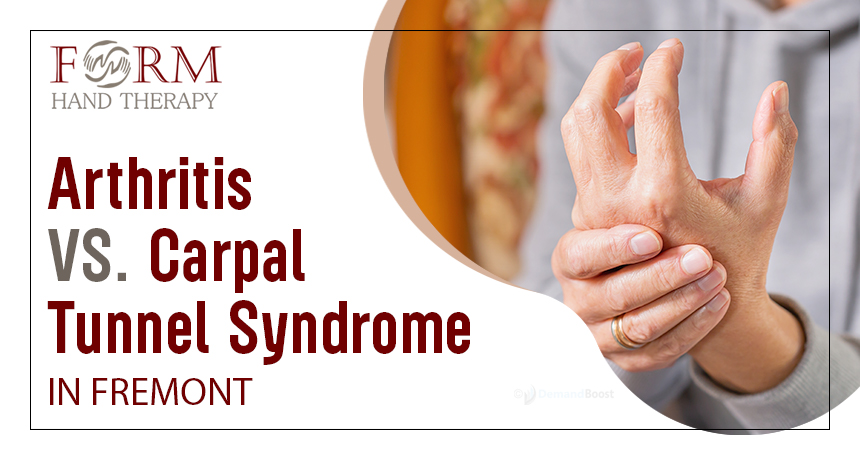Experiencing hand or wrist pain doesn’t necessarily mean you have Carpal Tunnel Syndrome (CTS). While CTS is a common cause, many people mistakenly assume it’s the source of their discomfort. In reality, hand pain can result from several conditions, with arthritis—inflammation of the joints—being one of the most frequent. Of the different types of arthritis, Osteoarthritis, the wear-and-tear form, most often affects the hands, wrists, and fingers. Although CTS and osteoarthritis can share similar symptoms, understanding their differences is crucial, as it guides the most effective treatment approach.
At Form Hand Therapy, we help patients in the Fremont area effectively manage and overcome these hand and wrist conditions through non-surgical treatments—and surgery when necessary. The first step is identifying the root cause of your pain, which starts with a thorough consultation and assessment. While you schedule your visit, here are some key distinctions to help you understand whether your symptoms may be related to CTS, Osteoarthritis, or both.
Arthritis or Carpal Tunnel Syndrome? Understanding the Key Differences
- Cause: CTS occurs when the median nerve is compressed at the wrist. Osteoarthritis develops when the cartilage cushioning the joints gradually wears down, causing bones to rub against each other.
- Contributing Factors: CTS can result from injuries, repetitive movements, certain occupations, obesity, being female, fractures, or conditions like Rheumatoid Arthritis. Osteoarthritis may arise from aging, overuse, or a family history of the condition.
- Symptoms: CTS often causes numbness, tingling, weakness, and burning sensations in the hand and fingers. Osteoarthritis typically results in joint pain, tenderness, stiffness, swelling, warmth, and reduced range of motion.
- Affected Areas: CTS impacts the thumb, index finger, middle finger, and half of the ring finger, which are supplied by the median nerve. Osteoarthritis commonly affects the hand joints, including the wrist, fingertips, base of the thumb, and middle finger joints.
- Progression: Osteoarthritis is a chronic condition with no cure, and its symptoms typically develop gradually and worsen over time. CTS can be effectively treated, but if left unmanaged, symptoms may develop gradually or suddenly, fluctuate in intensity, and worsen over time.
- Treatment: CTS is initially treated with wrist splints and activity modifications; if symptoms persist, steroid injections or surgery may be recommended. Osteoarthritis management focuses on relieving symptoms through exercises, stretches, medications, and supportive splints, with surgery considered for advanced cases.
Carpal Tunnel Syndrome and Arthritis Treatment in Fremont at Form Hand Therapy
While Carpal Tunnel Syndrome (CTS) and Osteoarthritis have distinct differences, they can share similar symptoms—and it’s possible to have both at the same time. The most reliable way to determine the cause of your discomfort is to consult an orthopedic specialist, like Dr. Besh. He and his team at Form Hand Therapy have extensive experience diagnosing and treating a wide range of hand, wrist, and elbow conditions. Whether your treatment involves non-surgical solutions or surgery, we’ll be with you every step of the way.
Don’t let hand or wrist pain limit your daily life. Schedule your consultation at Form Hand Therapy in Fremont today to begin your journey toward lasting relief and improved hand function. Call us at (510) 350-3030 or book your visit online.
Sources: https://www.medicalnewstoday.com/articles/carpal-tunnel-vs-arthritis
https://www.verywellhealth.com/carpal-tunnel-vs-arthritis-5095612

